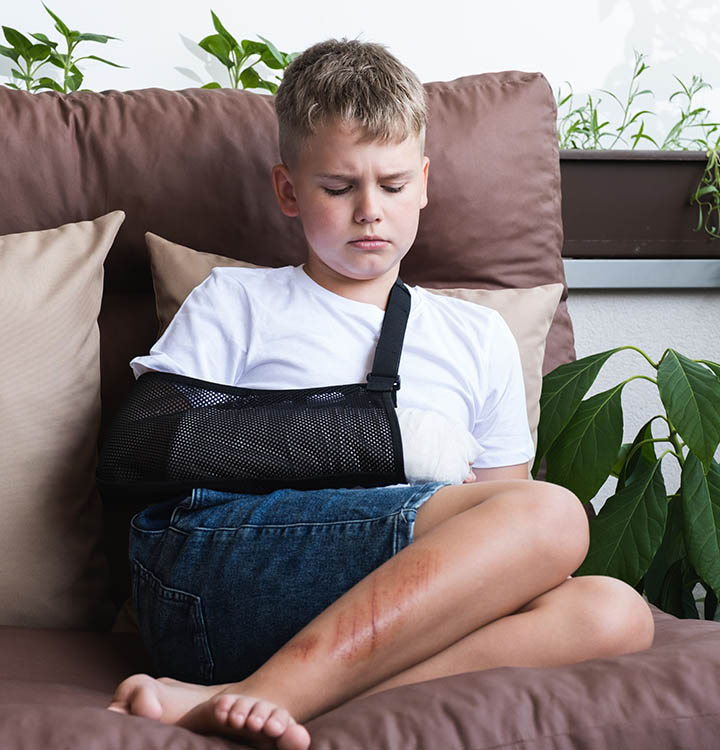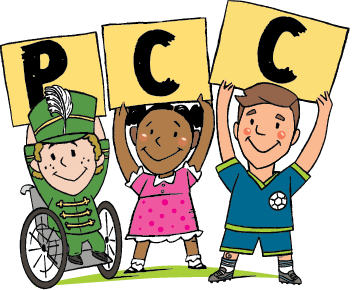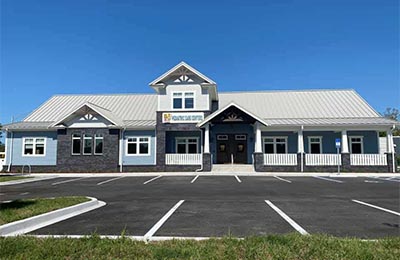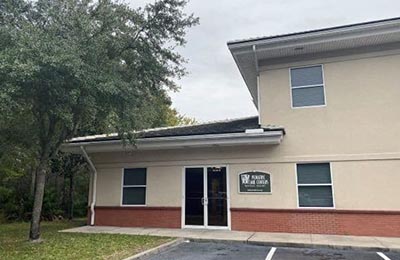Home » Common Childhood Illness FAQs » Fractures
What You Should Know
Fracture FAQs

A fracture of a bone is when the bone breaks or partially breaks. This is not an illness but it’s common in children from accidents or an injury from a sports event so we wanted to ensure fractures were included.
Click on the questions below to learn the difference between a broken bone and a fracture, how to tell when your child has a fracture, and what are the symptoms of a fracture or broken bone.
It will make no difference to a child in pain, but we’re sometimes asked “does my child have a fracture or broken bone?” In reality, they are the exact same thing. Whether the damage to the bone is mild or severe, it is correct to identify it as a broken bone and a fracture.
Many people were taught that a broken bone is worse than a fracture, but in this scenario they’re likely thinking about a “hairline fracture,” which is still a broken bone. Hairline fractures are tiny cracks in bones, which are often caused by repetitive stress from activities like running or jumping. These injuries are common in athletes, but hairline fractures can occur in children. A pediatrician will recommend the proper course of action, but surgery is not often needed for a hairline fracture. A cast, brace, or splint paired with rest may be sufficient for healing the injury.
A bone that is broken into two or more pieces is still a fracture, but this is often what people are thinking of when saying “broken bone.” These are common in children, and as many as 50% of children will experience a broken bone while growing up. These types of broken bones are painful and are not going to heal on their own, so it is important to quickly seek medical treatment.
A more severe bone injury is called an open fracture, or compound fracture. This is when a bone is broken into two or more pieces, but the bone breaks through the skin. This is an obvious injury and also requires emergency medical treatment. If your child has a compound fracture, call 911.
If your child has severe symptoms, this is no time to be asking “how do I tell if my child has a broken bone?” A trained specialist has the medical experience needed to know how to tell if a bone is fractured.
The doctor will likely do some diagnostic testing to look at the injury. Most commonly, this will include an x-ray. For more severe injuries, the doctor might also ask for an MRI or a CT scan to get a better look.
Treating the fracture will depend on the severity. Often treatments include a splint or cast and directives to not use the injured bone so it can heal. In more severe cases, your doctor might send you to a specialist to see if the injury requires surgery to aid in healing.
With less severe injuries, it may be difficult to identify a bone fracture in a child. Fortunately, there are some signs to help you know how to tell if a bone is broken.
Common symptoms of a fracture or broken bone include:
- Pain
- Swelling
- Obvious deformity of the bone
- Trouble using or moving the bone in a normal way
- Warmth, bruising, or redness
On the one hand, your child may come home from practicing limping and complaining. Yet, if the symptoms seem severe right away, you may need an urgent care facility to look at the injury.





